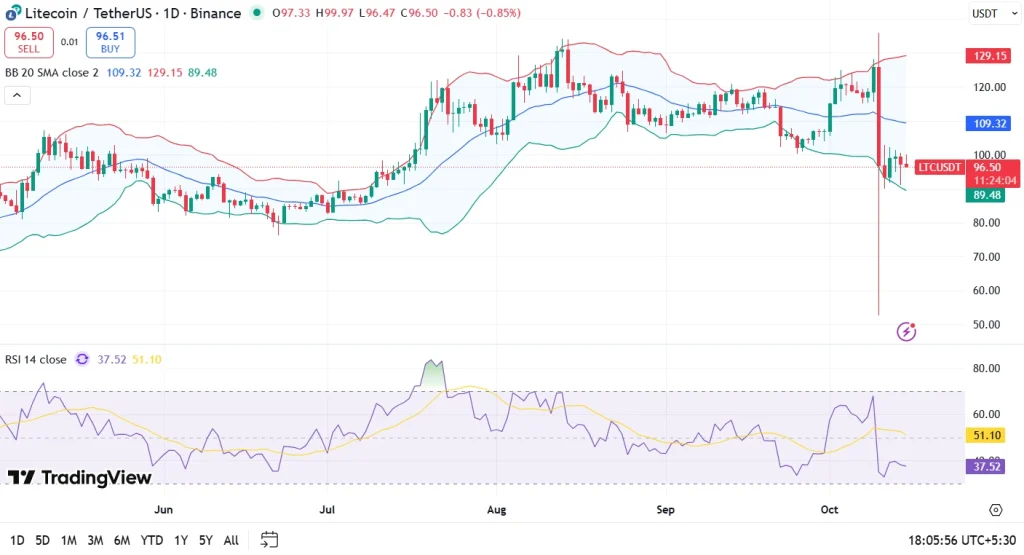Polkadot Weekly Report | Web3 Summit successfully concluded in Berlin! Pudgy Party is expected to launch on Polkadot on August 29!

Polkadot
This week, the Web3 Summit was held in Berlin! Gavin Wood once again dropped a “thought bomb” at the conference: reduce staking incentives! The goal is to lower the annual security cost from $500 million to $90 million!
He also proposed short-term solutions focused on adjusting certain economic parameters through OpenGov, such as fixing the total DOT supply at π×10⁹ DOT, halving every two years, and gradually reducing inflation; and using multiple mechanisms to reduce users’ willingness to stake.
For the mid-term solution, he hopes to introduce PoP (Proof of Personhood) + Individuality to build an “identity-driven” security model! In addition, a major plan was announced—to launch a native stablecoin payment for Polkadot, creating a capital cycle within the ecosystem!
See the full content in PolkaWorld’s article

Additionally, PolkaWorld also analyzed the potential impact of reducing security expenditure from $500 million to $90 million! The analysis mainly focused on staking and treasury funds! We believe that if Polkadot cuts 82% of its security spending, it could release 345 million staked DOT! Assuming 345 million DOT enters DeFi, TVL could exceed $3 billion, breaking into the global top ten! This would bring five profound effects:
- More capital attention on DOT
- Attract DEX/lending/stablecoin project deployments
- Enhance on-chain utility of DOT
- Boost ecosystem valuation and fundraising capability
- Rewrite the narrative of “no one uses DOT”
⚠️ But the “cost” is: treasury income will drop from $88 million per year (based on $500 million security cost) → down to $15.88 million, entering a “low-budget era.”
- Reference comparison: In June 2025, treasury expenditure reached $28.24 million.
- Data source:
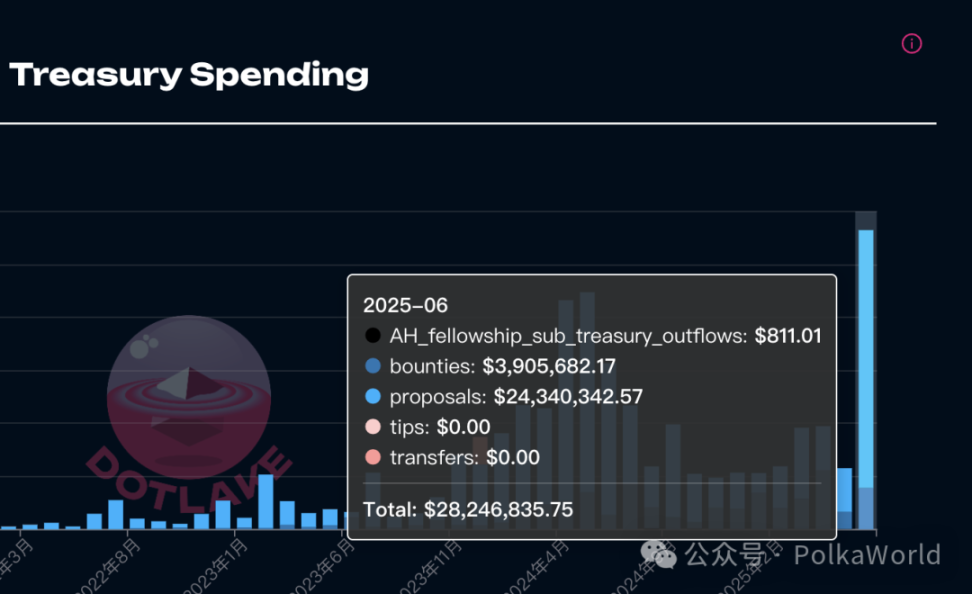
Therefore, as a DV, PolkaWorld has also updated its OpenGov voting principles!
1. Only fund “indispensable” proposals, prioritizing true public goods! Reject “optional” pure publicity proposals!
2. SDK/development tool projects will only be supported with retroactive funding (apply after having users and data)
3. Suggested salary caps:
- Development: $100/hour
- Maintenance: $30/hour
The goal is to make the treasury more efficient and support builders who truly drive ecosystem development.
Read PolkaWorld’s latest article for details
Additionally, the Polkadot Technical Fellowship also held an offline meetup in Berlin this week and shared 8 key updates with the community, including:
- Elastic scaling ready: attack protection is complete, can go live after governance approval, and mainnet deployment takes only 20 hours!
- NOMT joins Polkadot: consensus engine upgrade, performance may increase by up to 10x, MVP to be released by year-end!
- 500ms block production mechanism progressing rapidly: the “BastiBlocks” model can decouple block production speed from core count, allowing free customization!
- Polkadot Hub will soon support dual contract architecture of PVM + EVM: Solidity contracts can be deployed as PVM or EVM bytecode, further improving developer experience!
- The next round of TPS stress testing may reach 300,000: plans to use 46 cores, test extreme performance, with a focus on low latency and finality!
- And more
See more progress in PolkaWorld’s article

The Web3 Summit successfully concluded on July 18! In addition to the major updates from Gavin and the Technical Fellowship, this conference also produced many exciting discussions on governance, security, privacy, and more! PolkaWorld will bring you the Chinese content in the future! But before that, you can check out the Web3 Summit recap video!
Last week, Gavin answered some community questions in the JAM chat group! He released a lot of noteworthy JAM protocol roadmap alpha. He not only explained how JAM’s Bootstrap service will develop and the possibilities for diverse implementations, but also clearly proposed a radical and “constitutional” idea—to fix the total DOT supply at π × 10⁹ (about 3.14 billion) and write it into the JAM genesis block, and for the first time responded to JAM’s governance issues!
This is not just a “Q&A summary”—it actually outlines Gavin’s complete blueprint for how the JAM protocol will gradually move toward technical neutrality + controllable governance + autonomous evolution.
Ethereum community users tweeted: “Ethereum wants to turn all altL1s (including Polkadot) into L2s and devour everything!” 👀
In response, PolkaWorld said: “In fact, these altL1 chains on Polkadot are already de facto L2s, or you can call them Polkadot rollups. In terms of technical architecture, Ethereum is also an L2 of Polkadot. Because it is itself a smart contract chain, it can only natively host dapps, not rollups.”
Previously, Gavin also mentioned this issue in an interview:
Do you see that most Web3 projects are stuck in the incentive loop of “token launch → airdrop → pump → dump → death” rather than real business logic?
🚫 Airdrop ≠ user growth
🚫 TVL ≠ product retention
🚫 Price swings ≠ revenue loop
But Polkadot is becoming an exception.
✅ Use Coretime to provide chain-level computing power (like AWS)
✅ Use elastic scaling to support business growth
✅ Use one-click deployment to lower the threshold for chain services
Forming a closed loop: DOT → rent core → on-chain services → revenue → scaling → DOT flows back → further growth
Web3 should be “used,” not “speculated.”
Polkadot is moving from a financial narrative to the real economy.
Read more here
5-minute Rollup deployment? Polkadot’s one-click deployment platform PDP June update is here!
- Beta testing achieved 100% successful deployments
- Automatic Coretime renewal feature is now live
- One-click Rollup offlining process is also live
- The team plans to shift to Kubernetes in Q3 and support native bridging for system chains
- Clear goal for next quarter: launch official Rollup!
See all updates here:
Philippines’ leading crypto platform Coins.ph announced it has integrated Polkadot’s Asset Hub, allowing users to transfer stablecoins faster and with lower fees via the Polkadot network.
Coins.ph CEO Wei Zhou said:
“By integrating Polkadot Asset Hub, we have greatly reduced the cost and time of stablecoin transfers—perfect for users who want to remit money to their families, wherever they are.”
This is another important step for Polkadot in compliant payment scenarios in Southeast Asia, and also demonstrates its huge potential in the cross-border stablecoin transfer market.
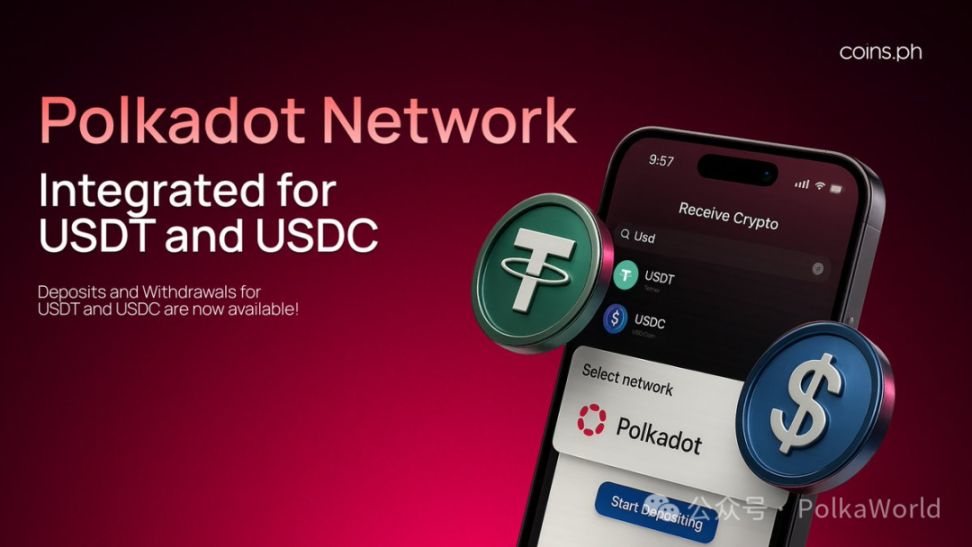
Polkadot’s official Twitter posted: Currently, stablecoin transfer volume has surpassed the combined total of Visa and Mastercard, but still only accounts for 1% of global currency. Stablecoins are rapidly rising, surpassing traditional payment giants!
They are widely used for:
💸 Payments
🧾 Payroll
🌍 Cross-border remittances
…and many more real-world scenarios.
The next real breakthrough will be:
✅ Better user experience (UX)
✅ More efficient on-chain infrastructure
✅ Wider user adoption
Programmable money is gradually becoming the new default form of finance, and the era of traditional fiat is being redefined!

Next Tuesday, PolkaWorld will participate in the official Polkadot AMA! Welcome to meet face-to-face with the core members behind the Harbour Industrial Capital Advisory Board! Learn how they support investments in the Polkadot ecosystem and interact with them during the live AMA session.

The Polkadot Asset Hub migration dashboard is now live and will display migration progress in real time. The latest update is that Paseo’s migration will be completed on July 28! Polkadot migration will be delayed by one month to October! You can also see more here
Dashboard URL:
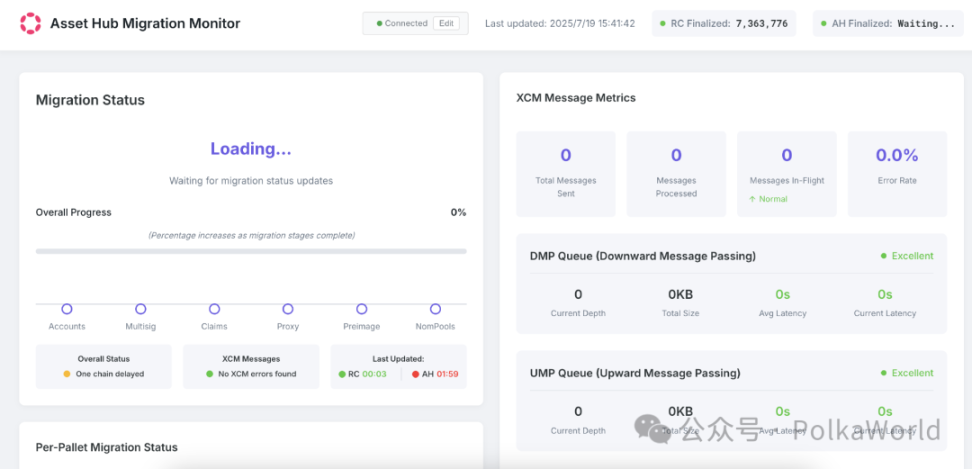
Ecosystem Projects
In the past 30 days, Bifrost completed $70.1 million in cross-chain transfers via XCM, accounting for 13.4% of the total Polkadot ecosystem. The top three flows are:
1️⃣ Hydration <> Bifrost: $41 million
2️⃣ Polkadot <> Bifrost: $27.4 million
3️⃣ Astar <> Bifrost: $900,000
Cross-chain interoperability is making DeFi simpler—all of this is happening on Polkadot.

Additionally, Bifrost upgraded to Runtime 20000 this week:
- Supports $vDOT cross-chain transfers between AssetHub and Bifrost
- Added representative voting function in the vTokenVoting module
- Optimized vToken exchange rate model
- Achieved vToken compatibility with multiple cross-chain bridges
- Preliminary support for integrating SLPx into AssetHub
This upgrade also introduces the Delegated Voting Track (DVT), allowing users to voluntarily delegate idle vDOT governance rights to Bifrost to participate in on-chain referenda. DApp integration is underway, and once complete, anyone can activate this governance right with $BNC, vote on proposals, and gain corresponding weight in Polkadot governance.

The Polkadot DeFi Singularity Program, jointly launched by Hyperbridge and Bifrost, has officially started!
Now, if you provide DOT liquidity on Arbitrum, Base, BNB Chain, or Ethereum, you have a chance to earn generous rewards of up to 29% APY.
However, these rewards are limited in time and quantity, so it’s recommended to participate as soon as possible!
You can check the details of each liquidity pool in this article:
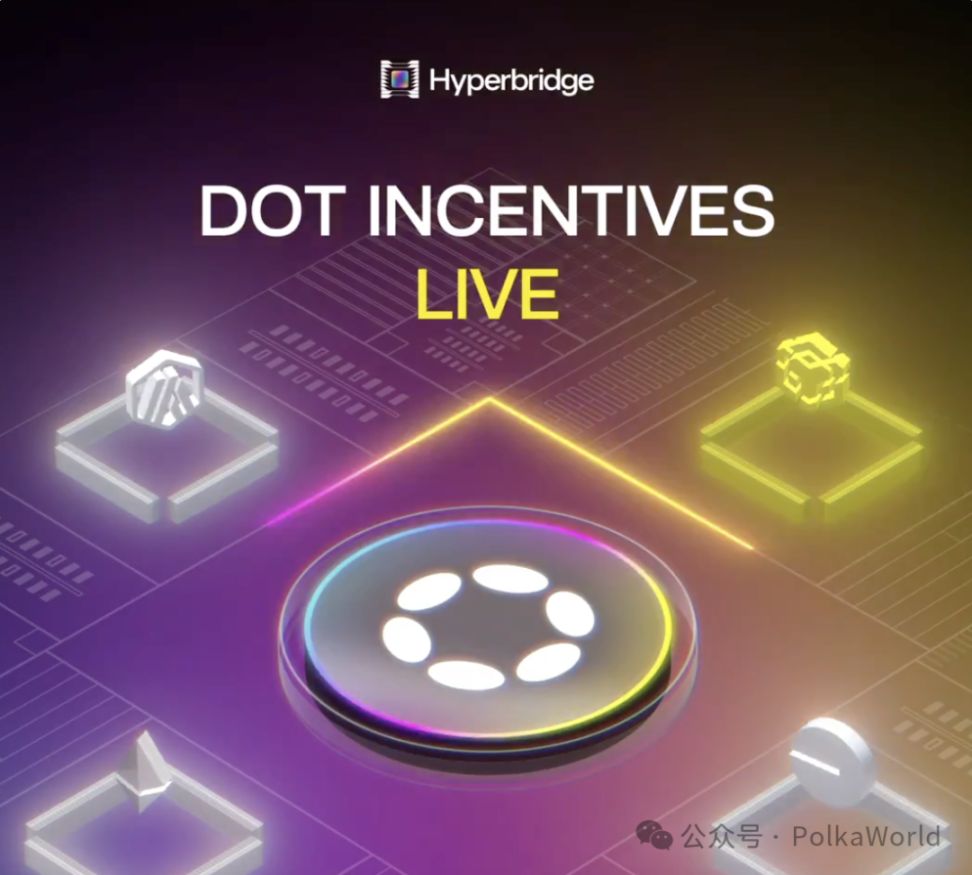
Pudgy Party is expected to launch on Polkadot on August 29!
This is not only a high-quality multiplayer competitive game, but also the first global mobile entry point for Pudgy Penguins, and is seen as a key breakthrough for large-scale adoption of Web3 games.
Backed by the @Polkadot ecosystem, “Pudgy Party” will bring real traffic to on-chain social and asset circulation, providing Polkadot with unprecedented user growth opportunities.
Reward event now live: retweet + follow @PlayPudgyParty for a chance to share $5,000 in $PENGU!
This Party is more than just a game.
Music is more than melody; it’s connection. PMEI is tightly connecting artists, fans, and infrastructure on the Polkadot network through real-world application scenarios, building a decentralized music ecosystem.
In the latest released video, founder spencerrrr introduced the complete ecosystem layout:
🎧 From the music distribution platform {bash}
🎫 To the fan interaction live project Guestlist+1
📱 And the mobile social music app mufi
These modules together form PMEI’s vision—to build the next-generation music economy on Polkadot, empowering creators, activating fans, and reshaping music infrastructure.
Learn more:
Moonbeam inflation mechanism update!
- 100% of transaction fees are burned, enhancing deflationary effect
- 80% of slot collateral inflation is now injected into the Treasury, making treasury income more stable
- Collator and Delegator reward logic remains unchanged, with staking APY target still at 2.5%
This upgrade balances network incentives, treasury sustainability, and long-term token value.

OriginTrail announced that its Decentralized Knowledge Graph (DKG) and Model Context Protocol (MCP) are now officially integrated into Microsoft Copilot Studio.
Through this integration, developers can build AI agents with verifiable memory, knowledge collaboration capabilities, and real-time data reasoning, suitable for platforms such as Microsoft Teams.
- MCP: defines an open protocol for AI to interact with external data and tools
- DKG: provides a structured, traceable knowledge layer to support knowledge generation, querying, and collaboration
- Integration effect: Copilot agents can access trusted knowledge graphs, write memory assets, and share knowledge
Applicable to supply chain, research collaboration, content management, enterprise knowledge management, and more.
Watch the demo: Trace Labs General Manager Jurij Škornik demonstrates the full integration process and application showcase.
Disclaimer: The content of this article solely reflects the author's opinion and does not represent the platform in any capacity. This article is not intended to serve as a reference for making investment decisions.
You may also like
Interpretation of b402: From AI Payment Protocol to Service Marketplace, BNBChain's Infrastructure Ambitions
b402 is not just an alternative to x402 on BSC; it could be the starting point for a much bigger opportunity.
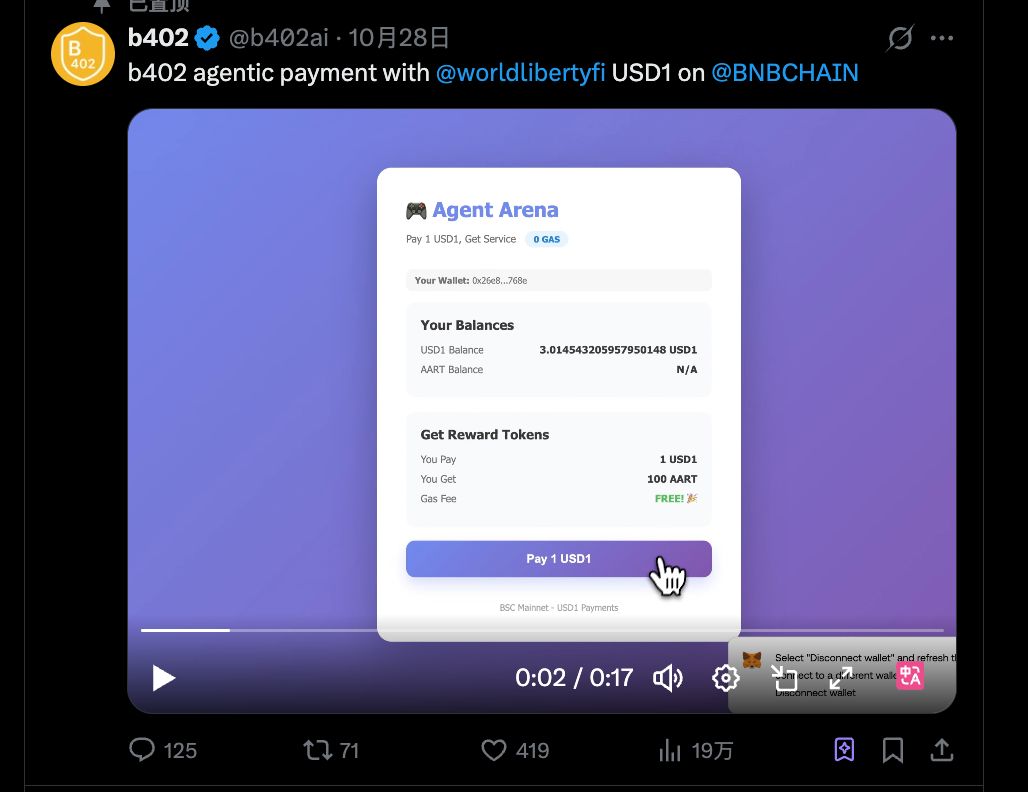
Shutdown Leaves Fed Without Key Data as Job Weakness Deepens

Institutional Investors Turn Their Backs on Bitcoin and Ethereum
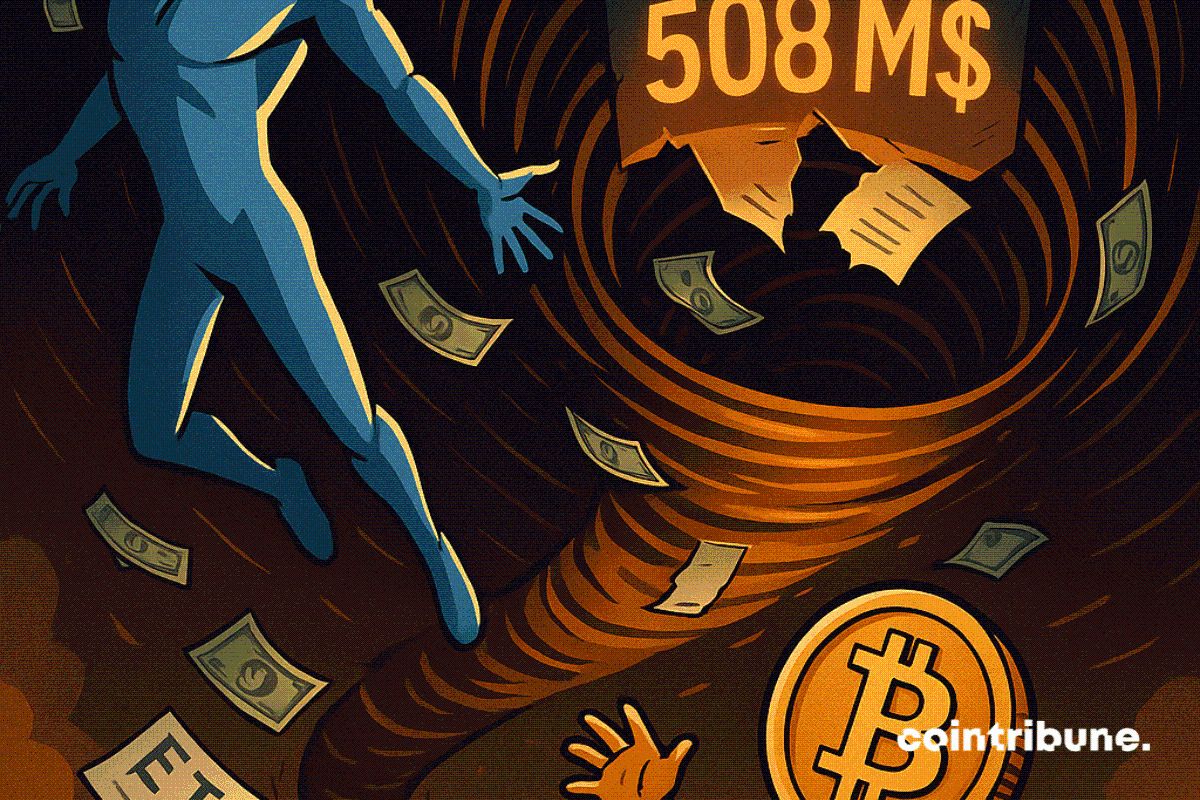
Litecoin LTC Price Prediction 2025, 2026 – 2030: Can Litecoin Reach $1000 Dollars?
